
| Cabbage or Small White (previously known as Artogeia rapae) PIERINAE, PIERIDAE, PAPILIONOIDEA | (donherbisonevans@yahoo.com) and Stella Crossley |

| Cabbage or Small White (previously known as Artogeia rapae) PIERINAE, PIERIDAE, PAPILIONOIDEA | (donherbisonevans@yahoo.com) and Stella Crossley |
The scientific name of this species is probably derived from the Greek word rapavi (rapavi) meaning 'radish', which is one of the food plants of the Caterpillar.
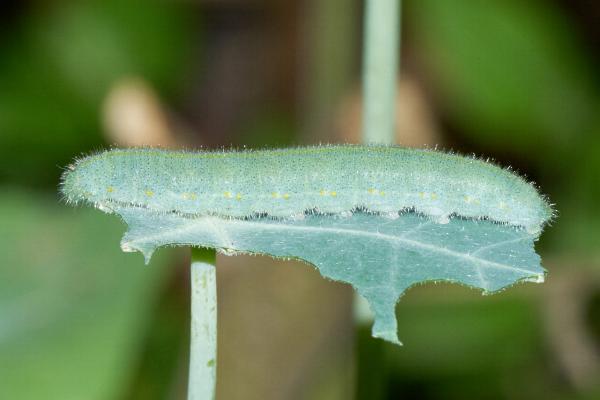
This velvety looking plain green caterpillar is a similar colour to the leaves of many of its food plants. The caterpillar is an international pest on:
It seems to need food plants that contain Mustard Oil, so it feeds on most species of the family BRASSICACEAE, including :
It also will develop on a variety of plants from other families, including :
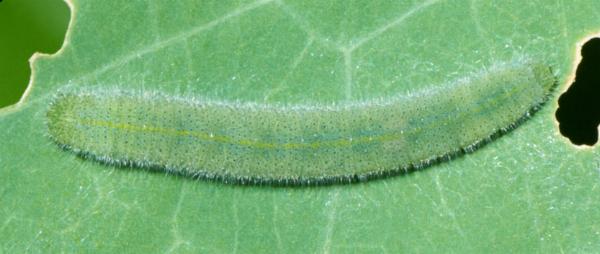
The caterpillar, when mature, has a pale yellow line on the back, and a line formed of yellow spots on each side. It normally sits on the upper surfaces of leaves of its food plant in broad daylight. Its coloration is presumably an effective camouflage. It grows to a length of about 3 cms.
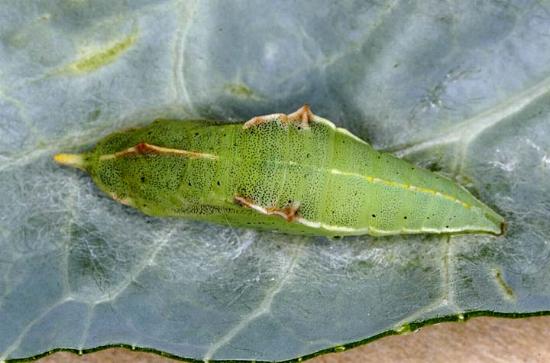
When the caterpillar is fully grown, it creeps off: searching for a sheltered crevice in which to pupate. It usually crawls upwards in its search and if its search is unrewarded, may pupate on an exposed wall. It attaches itself at both ends of the body with silken pads, and also puts a loop of silk around its middle. It turns into an exquisitely sculptured angular form, like a broken but symmetrical piece of jade. Its final colour is influenced by the colour of its background. On pale backgrounds, the pupa remains greener than on dark backgrounds. The pupa may even turn brown.
The pupa of Pieris rapae has been found to contain a carcinogenic chemical Pierisin.
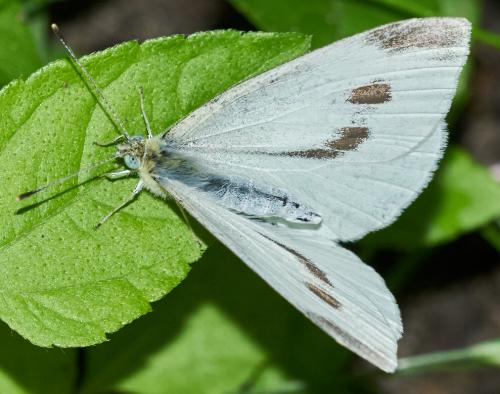
In summer, the butterfly emerges after about two weeks. The upper surfaces of the wings are white with black tips to the forewings, and a faint black spot on the front margin of the hindwings. Females have a pair of black spots on each forewing.

Males have a single black spot in the middle of each forewing.
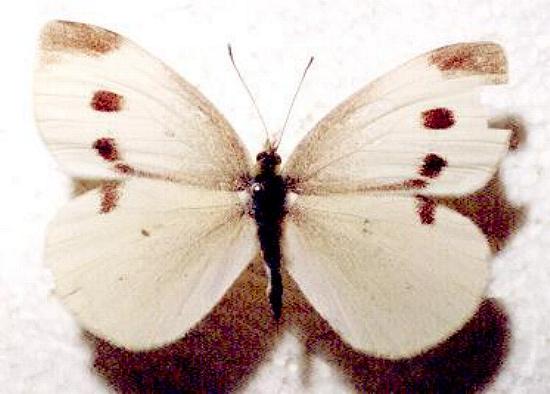
Butterflies from pupae which have been subjected cold temperatures in winter are much paler than summer forms from pupae that have stayed warm. Both sexes have a wingspan of about 4 cms.
The undersides of the forewings are similar to upper surfaces, except for the abscence of the black wing tips. The undersides of the hindwings are plain pale yellow.
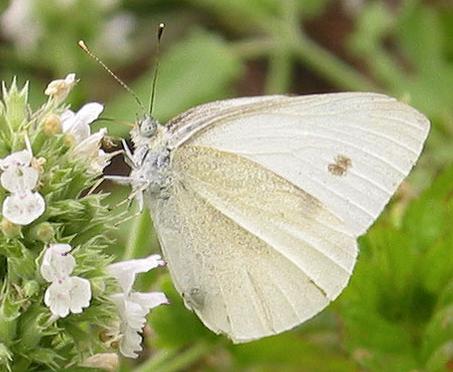
The Cabbage White is not originally a native to Australia. There are in fact no Australian native members of the genus Pieris. This species Pieris rapae appears to have originated in Europe, where it is called the Small White, to distinguish it from Pieris brassicae (the Large White), the caterpillar of which also feeds on Cabbage. In Europe, the Large White is plentiful, and is also confusingly known as the Cabbage White. The Large White has appeared in India, and Japan, and North America, but has not yet reached Australia.
There is much confusion about the common names of caterpillars that feed on Cabbages, which in general is why scientific names were invented. Note that the Australian Cabbage White (Pieris rapae) is quite different from the Cabbage Moth: Plutella xylostella, which is also a world-wide pest of Cabbages.
In North America, Pieris rapae is known as the European Cabbage Butterfly. The species has spread around the world in the wake of European colonisation, and cultivation of cabbages. It was first found outside Europe in Canada around 1860. It had spread to California by 1883, Hawaii by 1898, and it reached Melbourne in 1929. The species spread across the length and breadth of Australia reaching Perth in 1943. In 1980, it was featured on Japanese postage stamps :
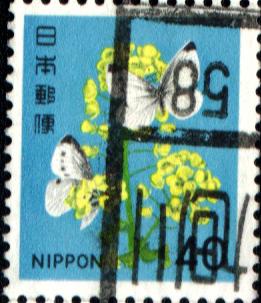
The species now occurs all over Australia, including
The eggs are yellow, ridged, and bottle-shaped, with a height of about 1.5 mm. They are usually laid singly on the underside of a leaf of a foodplant. The eggs are usually laid singly or in groups of up to 20 on the undersides of a foodplant leaf.
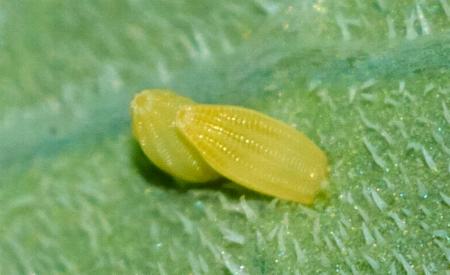

The damage caused by Pieris rapae to crops has provoked various government agencies to try and control the species using its natural infections, parasites, and predators, including:
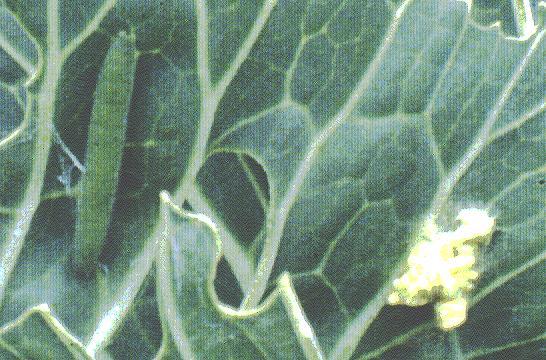
Nevertheless, the Cabbage White is still probably the commonest butterfly in Sydney and Melbourne gardens.
Further reading :
Michael F. Braby,
Butterflies of Australia,
CSIRO Publishing, Melbourne 2000, vol. 1, pp. 343-344.
Kelvyn L. Dunn,
Important New Distribution Records for the Cabbage White,
Pieris rapae (Linneaeus) (Lepidoptera: Pieridae) in Australia,
Butterflies and Other Invertebrates Club,
Metamorphosis Australia,
Issue 70 (June 2013), pp. 27-31.
Carl Linnaeus,
Insecta Lepidoptera,
Systema Naturae,
Volume 1, Edition 10 (1760), Class 5, Part 3, p. 468, No. 59.
 caterpillar |  butterflies |  Lepidoptera |  moths |  caterpillar |
(updated 21 December 2009, 23 December 2017, 2 September 2021)